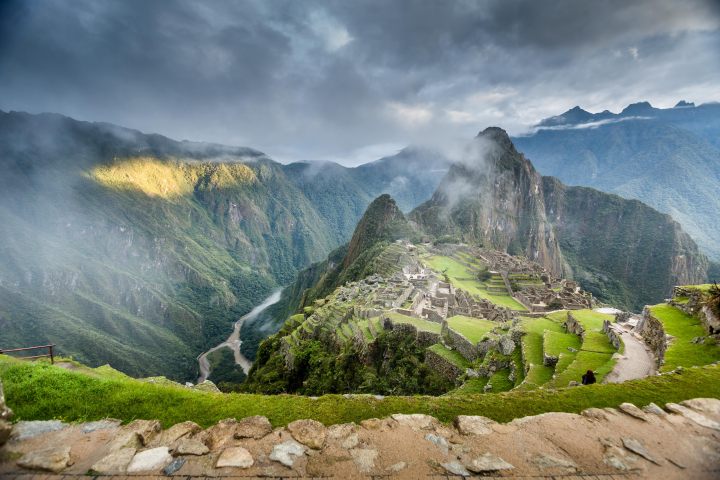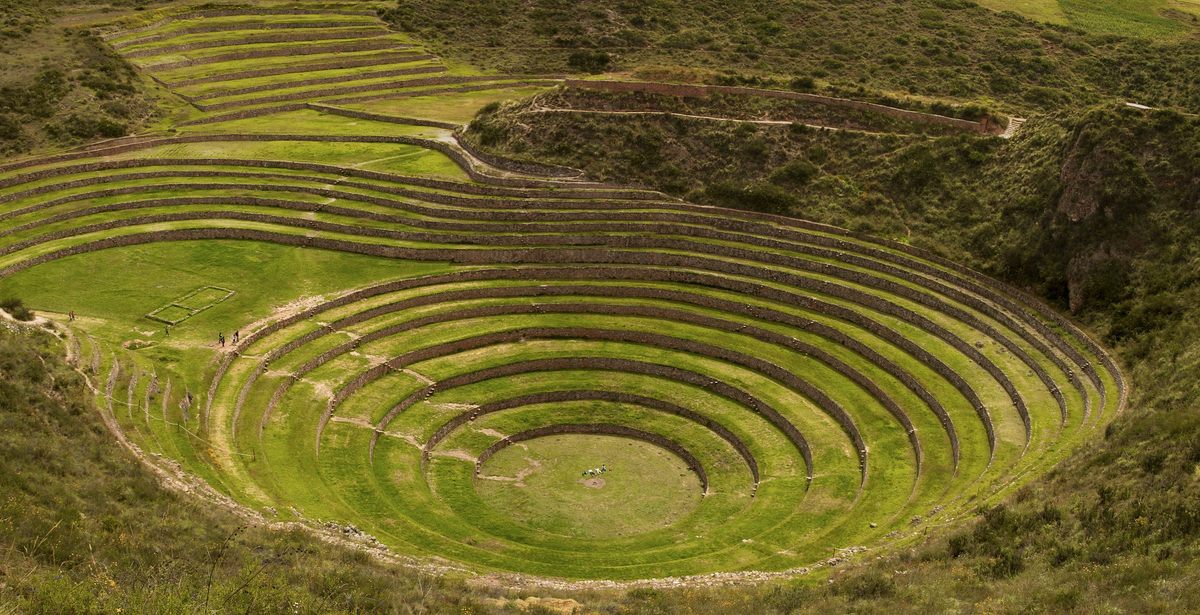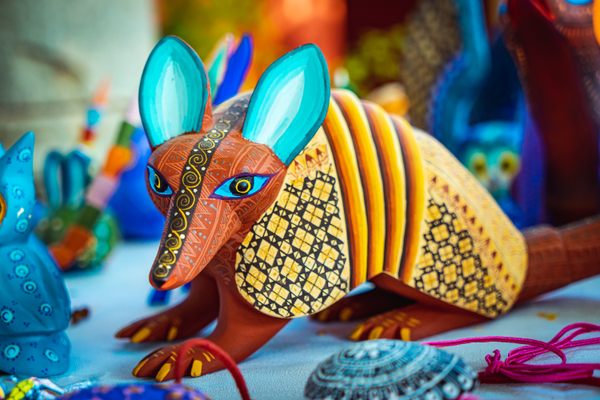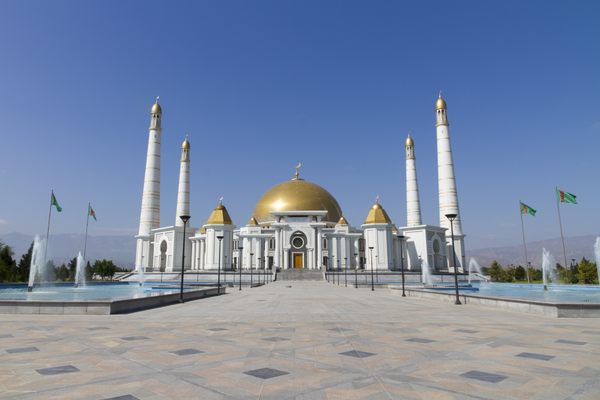
The Best Ways to Explore Peru’s Ancient History and Exciting Present
A local tour guide gives us an insider look at Peru’s hidden wonders.
For William Mirano, tourism runs in the family. Growing up in Cusco, Peru, his mother ran a shop in the airport, and his aunt and uncle were tour guides. When he was fourteen, his uncle hired him as a porter for a trip along the Inca trail. “It was hard,” he remembers, “but I got to watch my uncle and auntie socialize with people from different countries, laughing and talking in English, this language I didn’t know.” He has been working as a guide ever since, and now has two decades of guide experience under his belt.
Sharing his home country with others is perhaps his favorite part of the job. “I am just a regular guy, and I like to enjoy these experiences with other people,” William says. “Every day is an opportunity to learn something—I want to be part of the adventure, too.”
For William, guiding tours like the Atlas Obscura Peru trip offers him the opportunity to tell the story not just of his country, but of his family as well. He loves to tell his tours a favorite story of his grandmother, who lives in a small mountain village and was struck by lightning while tending to sheep with her sister. After spending two days in a near-comatose state, she woke up, and had acquired healing powers. “Every single person there started calling her doctorita, or little doctor,” William says. “Most people in town preferred to see her instead of going to the hospital.” These are the stories that make a place—not just the ancient history, but the small, personal histories as well.
As part of Atlas Obscura’s sweepstakes with Cayman Jack Margarita, we’re offering insider guides on destinations that make the perfect summer adventure. Here are William’s favorite places in Peru.

Nazca
“Nazca is one of the great mysteries of the world,” William says, referring to the giant ancient line art carved into the desert in southwest Peru. These glyphs, only visible from very high altitudes, include hundreds of figures, from spiders to geometric shapes to monkeys as long as two and a half football fields. “They are really in the middle of nowhere, and to see them you have to get in a little plane,” he explains. And we still know very little about why these line drawings appeared: “Why is there a monkey in the desert? We have no monkeys in the desert! All I know is these were clearly very special figures” to the Nazca people who inhabited the region between 200 BC and 600 AD.
The Nazca region is also home to a number of other fascinating sites, and William enjoys the opportunity to share the history with his groups. “Everyone visiting Peru goes to Machu Picchu,
but people don’t really know about the pre-Incan culture,” he says. “This is something that I think makes the experience even better.” At the Chauchilla Cemetery, you will find a series of mummies, once victims of grave-robbing but meticulously restored in their original resting places. Cauhachi is an expansive former pilgrimage site of the Nazca people, which has long been a popular destination for archaeologists and looters alike. And in the capital city of Nazca, you can see sophisticated ancient hydraulic systems, and visit a museum dedicated to the civilization that developed them.

Machu Picchu’s Sun Gate and Sun Temple
You may think that being a professional tour guide would make Machu Picchu feel a little less special after years and years of visits, but for William, it hasn’t.
The ten-kilometer ascent up to Machu Picchu concludes at the Sun Gate, which offers sweeping views of the site. “It’s very emotional when you get there,” he says. “Everyone has a different reaction when they see it. And it’s where I can stop and tell people the story behind the stones.”
His other favorite part of Peru’s most famous location is the Sun Temple. While only priests were allowed to enter the temple in its heyday, anyone can experience its splendor now. One of the most special things about it, William says, is that “there are these big carved boulders in the temple that come from a place four kilometers away,” one of the many mysteries of this wonder of the world. “We know it was a sun temple because on one specific day of the year—December 21, Peru’s summer solstice—sunlight comes into the temple and creates a small triangle of light for, like, three minutes.” This patch of light on this special day illuminates that ceremonial boulder in the temple’s center.

Cusco
“The majority of tours start in Lima,” William explains, “but Cusco is my hometown,” and holds a special place in his heart: it’s one of his favorite places to take tours. He begins in the local markets: “I like to introduce people to new flavors. We’ll get some native fruits, we’ll get chuta, this huge sweet bread, and a little bit of cheese. There’s also a witches’ market, where you can find potions to attract people to your business or keep away negative vibes. You can also try coca tea and coca candies.”
One of his favorite restaurants in the city is Nuna Raymi, in part because it primarily uses ingredients from indigenous farmers throughout the region. There’s a small market before you enter, where “they have black corn, chili peppers, giant onions, passion fruit, chocolate, and potatoes—Peru is a very big country with a lot of different types of potatoes,” William says. “And not only is the food delicious, but they support the communities, and serve a lot of native ingredients.”
Ollantaytambo Ruins
“I often visit Ollantaytambo as a ‘preview site’ before Machu Picchu,” William says, as they are an easy drive from Cusco. These 15th-Century ruins, once home to the Incan elite, are very well preserved. “You can still walk through the little streets, and see their water fountains.” On the settlement’s outskirts is Ollantaytambo Fortress, which served as the last Inca stronghold against Spanish colonizers.

Nearby are the slightly more mysterious Moray ruins, a series of terraced rings that were likely built as an agricultural experiment, with soil imported from other regions.

Q’eswachaka Rope Bridge
Rope bridges were once very common in the Incan road system; today only a few remain, including the Q’eswachaka Rope Bridge. “It’s very special, and very few tourists go there,” William says. During Incan times, communities would work together to build these bridges, with the women braiding rope out of grasses, and the men braiding those ropes into even stronger cables. Over time, many of these bridges have decayed or been removed, but this rope bridge remains as a testament to Incan engineering and the preservation efforts of local communities. Each year, William explains, “on June 21st, our winter solstice, the people from the surrounding communities come to repair the bridge, and they celebrate with a festival and lots of corn beer.”
And a Word to the Wise…
“I always tell my groups, we should have respect for the local people,” William says. “If you take a photo, someone might take offense. So I always tell people to ask first, especially when we go to local markets.” This is the best way to respect the indigenous communities of Peru, he says. And supporting the smaller operators over larger stores is always a good idea. “I always tell people: respect the culture, respect the people. And go to the very little stores, buy your souvenirs from local people on the streets.”
Want to explore Peru? We’re teaming up with Cayman Jack for an epic trip giveaway. Enter here for your chance to win a summer adventure.
This post is sponsored by Cayman Jack. Click here to explore more.






Follow us on Twitter to get the latest on the world's hidden wonders.
Like us on Facebook to get the latest on the world's hidden wonders.
Follow us on Twitter Like us on Facebook